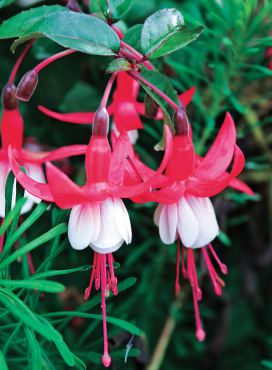
A hummingbird darts about the garden, its long, willowy tongue flicking in and out of its beak in anticipation of the honey-sweet nectar. The miniature acrobat flies around, occasionally coming to a standstill in midair, its wings moving so fast, they disappear from perception. Cruising around, it zeroes in on its target — a bright, elf-size coral bell. The tiny bird gracefully moves in as its slender beak sinks into the flower. Drawing out a sweet reward, the hummingbird continues its delightful moves, as it forages among the flowers. A glimmer of sunlight sparkles through a drop of nectar that escapes its beak. This must be ground zero for heaven on Earth.
It’s fascinating to watch the local hummingbirds in the garden, flying from flower to flower, using abilities no other birds possess. Their wings rotate in a circle, giving them the capability to fly in any direction and hang suspended in midair. They can hover because their wings move back and forth in a figure eight. People love watching them. Not only can they move from a standstill to top speed in an instant, they have the skill to fly upside down for short distances and maneuver rollovers when attacked from above. It’s likely the reason why these little ones are so fearless.
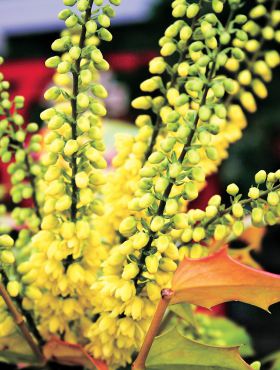
When the Rufous hummingbird returns from its annual migration, the male’s effusive antics are fascinating. He shows off his prowess to any female within watching distance. His loop-to-loops are amazing as the little bird continues defying gravity. When the flying acrobat comes to a halt in midair, he lets out a series of chirps that sound like a cartoon character slamming on imaginary brakes. Stunt pilots could learn a few strategies from these nectar-fueled flying machines.
When the males leave and continue on their migratory route, the females start bringing their brood to the feeders, watching over them like any mother hen. She will sit on a branch not too far away, ready to dive in and defend her children at the first sign of trouble. The juvenile males learn how to defend their territory with mock battles, and the feeders become crowded with squabbling young ones.
Spreading northward the last two decades, the Anna’s hummingbird is now a year-round resident in the West Sound. Some believe that this species survives the local winters better because they consume more slow-to-metabolize insects and spiders than other hummingbirds, which helps them through the cold nights.
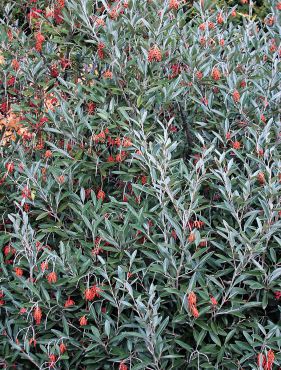
As more people realize they have these flying gems year-round in this area, they offer feeders even in winter. However, for maximum health, plants providing nectar every month of the year are best for the tiny birds. Think of the feeder as a supplemental energy boost, not the main course, when it comes to their diet.
Providing shelter along with nectar-rich, tubular flowers will entice these birds to take up residence in your garden. They remember and revisit every new nectar source. Gardens that are insecticide-free provide a smorgasbord of insects and spiders, a sizeable portion of a hummingbird’s diet. In return, the birds keep the insect populations at lower numbers.
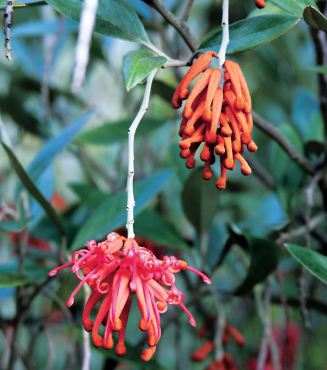
Winter Nectar Sources
A few plants provide flowers for Anna’s hummingbird during winter. The following shrubs are striking plants for the landscape, adding fantastic color during the seemingly endless, dreary gray days of the coldest season.
Royal grevillea (Grevillea victoriae), pronounced grev-ILL-ee-uh, has silvery-green leaves, russet-brown buds and fuchsia-pink flowers that bloom from mid-fall and all winter long. You may notice a large amount of activity from the little hummingbirds darting in and around it on a warm November day.
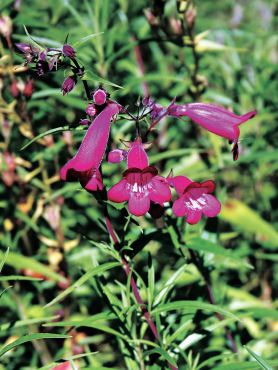
Another mainstay for the winter garden is the winter-flowering mahonias. Blooming earlier than the native Oregon grape, Mahonia “Arthur Menzies” and “Charity” will keep the winter garden filled with long stalks of cheerful, yellow flowers, and the Anna’s hummingbird returning to this rich nectar source.
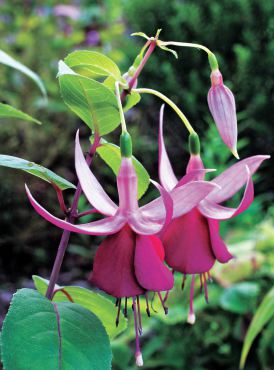
In late winter, two native plants, flowering currant (Ribes sanguineum) and Oregon grape (Mahonia aquifolium) blossom about the time the Rufous hummingbird male returns. The flowering currant lights up the Kitsap Peninsula with hanging racemes of brightly hued flowers, while the Oregon grape gives a hanging raceme of loose, yellow flowers. Both shrubs are handsome natives that can fit into many West Sound landscape styles.
Other Key Plants
Beardtongue (Penstemon “Andenken an Friedrich Hahn”), bred in 1918, is one of the oldest hybrids in the genus, one of the best to grow and the most successful one ever introduced. Most often sold as “Garnet,” it is a handsome evergreen plant, flowers from mid-summer to mid-autumn.
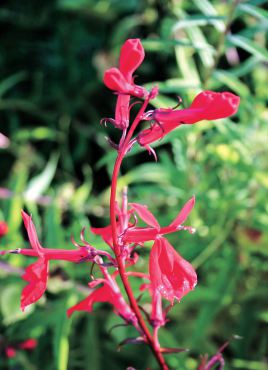
Cardinal flower (Lobelia cardinalis) has scarlet-red, tubular flowers and blooms on long racemes. Short-lived, moisture lover. Keep soil moist all summer.
Heuchera has a vast variety of species and cultivars. For the hummingbirds, choose varieties with red flowers — many are available in an assortment of foliage colors. Heuchera “Hollywood” blooms in late spring and again in summer.
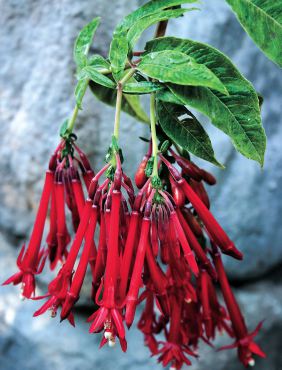
Fuchsias
Nothing in the garden says it’s summer more than hardy fuchsias and the hummingbirds who stake their claim. These perennials continue blooming until first frost, serving their nectar over two seasons. Favorites include “Aurea” with golden foliage and purple and red flowers. Another hardy upright is “Delta’s Groom,” which has large flowers with pink sepals and deep fuchsia-pink corollas.
Fuchsia corymbiflora is a tender species from South America, where it grows into small trees. The large clusters of long, bright red, tubular flowers have an exotic, tropical look. Indigenous people of South America sell the edible berries, with a mild flavor reminiscent of ripe figs, at the market place. Plant in a large pot and bring it into a greenhouse or unheated garage for winter.
Resources
- A complete list of plants that provide nectar for hummingbirds
- “Birdscaping for Garden Spaces” by George Adams, Timber Press
- “Birds of Washington State” by Brian H. Bell, Lone Pine Publishing
- “Landscaping for Wildlife in the Pacific Northwest” by Russell Link, University of Washington Press





























